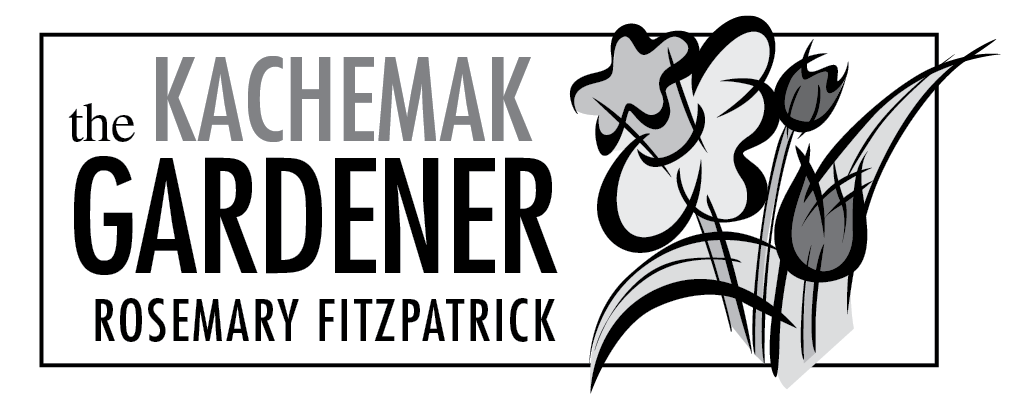I’ve been fussing around with the delphiniums. Now is the time to stake these beauties, now — before they bloom and the wind tears into them and they topple into a soggy heap, all that gorgeousness for naught.
Don’t let this happen to yours.
My preferred method of staking isn’t even staking. I make a cage out of pea fence and encircle the plant. As the season progresses the cage becomes invisible. Excellent. You are left with glorious blooms that make great cut flowers and, hung upside down, even better dried. I take a large bunch of them, dried, and hang them from the end of the curtain rod in the bedroom. The deep purple against the soft white is quite lovely. Give this a try, you will be rewarded.
I have yet to thin the stalks of delphiniums. Absolutely everything I have ever read about them encourages me to thin the stalks to five to seven on a mature plant. This will enable the plant to produce taller stems and more flowers. I fear I am not a thinner. They also need to be divided every three or four years, another error I continuously make. Learn from my mistakes.
I started some from seed this winter and I have a dozen excellent seedlings. But, against my better judgement, I planted them into the perennial beds where I want them to live for a good long time. What I should have done — set the seedlings into a nursery bed and given them a season to get some growth on them without any competition from surrounding plants. I even have a nursery bed. Oh, well.
With all the wrong moves I have made with my delphiniums I must say that they are usually gorgeous and bring a great deal of satisfaction. If you don’t have any of these there is plenty of time to acquire some, set them in the back of the border and let them work their magic.
I have yet to successfully stake columbine. You wouldn’t think they would need staking but mine tend to fall over. I am hoping that the surrounding perennials will hold them up, but no, they fall over. Most, but not all of them, are tucked in with the peonies, campanula glomerata and veronica. I like this combination. All the plants are hardy, the colors all work together and they fill in nicely. Maybe this year the columbine will behave.
I’m still grooming the shrubs. This process is almost over here at elevation 396 feet. The new leaves and growth are so tender this time of year that I can end up doing more damage than good. But, the Theresa Bugnet roses got the last of their dead or weak canes cut out today. If you live at a higher elevation you still have time to address this. I like to go over all the shrubs with pruning shears in hand and ‘clean up’ everything I can reach. It’s a fussy and mostly unnecessary chore. I say unnecessary because the new growth will eventually cover up the shabby ends.
The salvia that I started from seed last year have returned most successfully. The problem is I don’t know what kind it is. I plucked a seed packet off a rack and started a flat of them. I tried to research the brand on line to get more information (there was nothing much on the package) and failed. The reviewers found the same problem. And a problem it is because I really like these plants.
They are about 18 inches and bloom the same time as the peonies, and I want them all in the same bed. Lovely. But, I didn’t move them. Instead I have too many veronica in there. I have given away several clumps but not enough. This is a problem I have encountered over and over: put a seed packet in my hand and I start way too many plants.
Over and over. Goodness. Because I didn’t have faith in the salvia, and because they came up way later than anything else, I have left them where they are. If they are still around next year, I’ll make my move.
On to the vegetable plot: Check that your row of spinach/lettuce/radish/carrot whatever, is filled in. If not, rummage around for the seed packet and reseed the empty spaces. You have lots and lots of time to reap a harvest.
Once your Swiss chard or beets have germinated you will notice there is more than one plant to one seed. Go ahead and divide the seedling, gently moving and watering it in. You can increase your harvest quite efficiently like this.
Tomatoes: just shake the plant, people. You don’t need to use a paintbrush and go from bloom to bloom to pollinate. Just shake the plant. Do this every day and you will have more tomatoes that you will know what to do with. JUST SHAKE THE PLANT.
I have been wondering about visitors who, this time of year in particular, ask me to invite them back when there is “more color, when the garden peaks.” What?? So I have been thinking about “peak” for days and here comes the current issue of “Fine Gardening” and the gist of the whole issue is planting for the “peak” — that elusive period when your garden is at its most spectacular. So I read the whole issue, seeking enlightenment. No.
Every day is “peak” around here. Every day is different. Every day is a joy. Every day there is something new to see, something to make my heart sing. Every day is my “peak.”
May it be yours.
Rosemary Fitzpatrick is a longtime Homer gardener. She has been writing Kachemak Gardener since 1990.


